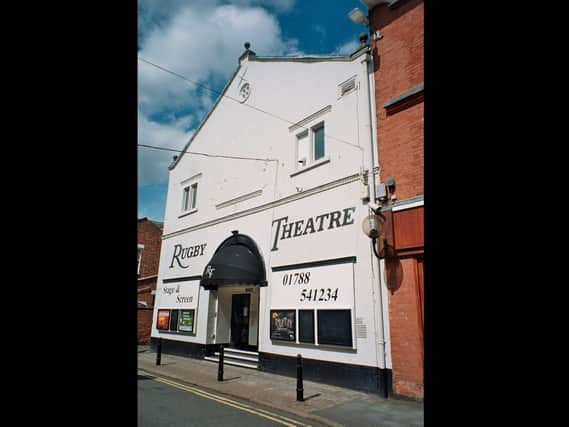Ale, cigarettes, a Triumph 650 and leaving school at 16 - life for Advertiser reporters in the 1960s


One of my earliest memories of working as a trainee reporter on the Rugby Advertiser in the 1960s was being sent to cover a monthly arts event held in a top room called Gallery 39.
On this particular occasion, my memory seems to have let me down a little, because I can’t recall where Gallery 39 was located exactly, save to say that it was above a shop somewhere in the vicinity of Albert Street.
Advertisement
Hide AdAdvertisement
Hide AdAnd sadly, a brief search of the internet yielded nothing. It would seem all trace of Gallery 39 has vanished into the mists of time.
What I do remember, however, is that I would go along on the appointed night, interview the exhibiting artist, and then return to the office where I would write what I thought was an erudite report.
Because I appeared to be the only reporter in an otherwise motley crew who had the vaguest interest in the arts, chief reporter Len Archer would inevitably put me down in the diary to attend this event, one of several ‘night jobs’ that a reporter in those days would have been expected to cover.
And that was fine by me. I had been interested in all forms of artistic expression since an early age, and covering the comings and goings at Gallery 39 was not a chore like, say, Braunston Parish Council, which seemed to ramble on for an eternity.
Advertisement
Hide AdAdvertisement
Hide AdReporters in those days were expected to be masters of all trades. Courts, councils, football and rugby matches, golden and diamond weddings, budgie, coney and cavy shows… the list of events to be covered, if not quite endless, often seemed that way.
Nevertheless, Len knew that I liked the more creative pursuits, and so he started marking me down to cover Rugby Theatre. But before I was allowed to fly solo, I had to learn the ropes from deputy chief reporter Guy Edgson.
I’ve written at length about Guy in my book Go and Make the Tea, Boy! He was about three years older than me, and had also gone to Lawrence Sheriff School.
He would have joined the Advertiser around 1962 after leaving ‘the Sheriff’ in the fifth year, in those days a perfectly respectable point in time to quit education and enter the world of work.
Advertisement
Hide AdAdvertisement
Hide AdBoth of us went into employment aged 16, swapping schoolbooks for notebooks. Imagine that today…
So, although not yet aged 20, Guy was the man to shadow and learn from.
Riding on the back of his 650 Bonneville motorbike, I travelled around the Rugby area covering everything from funerals to fetes. And some of the latter were indeed worse than death, I can tell you.
But when it was time to report on the Rugby Theatre’s latest production, we had not far to travel, in fact just across the road in Henry Street. And this is where my education, one that has stood me in good stead for more than half a century, started in earnest.
Advertisement
Hide AdAdvertisement
Hide AdBut writing a review of a production back then was very different to how it is today. For a start, quite a few column inches would be devoted to a detailed outline of the plot, something that is usually avoided nowadays.
When it came to describing the performance, the actors’ portrayal of characters would be described using everyday adjectives. ‘A fine rendition’, ‘a stirring speech’, ‘a pleasant interlude’… it was that sort of thing, and invariably complimentary.
And when the show was over, it was back to the Advertiser office armed with a few bottles of light ale, up the side stairs, along the corridor, and then a sharp right turn into the reporters’ room.
Despite the passage of the years, I can still recall the scene. The room might still be hot and stuffy as a result of the central heating being on all day, and whatever the season, permanently reeked of cigarette smoke.
Advertisement
Hide AdAdvertisement
Hide AdOnce seated, Guy would start tapping away, doing a running commentary as he typed. I would listen intently, the apprentice at the feet of the master. After a while, we came to the most important part, the bit that we simply could not get wrong.
Names. They sell papers, boy. And so at the end of the review, everyone – from the person on the box office to the director of the show – had their name in lights.
This meant that could be anything of up to 40 people listed. And woe betides you if a single one was misspelled or wrong in any way. That’s why the Friday morning phone call to the reporters’ room was dreaded.
Was it someone ringing up to complain?
I must have written thousands of articles about the arts in my time as a journalist. And although the method of writing them has changed down the years – and listing names no longer done – whenever I start to pen a review, I still think about Guy Edgson’s wise words of all those years ago.
John Phillpott’s book Go and Make the Tea, Boy! is an account of his days as a trainee reporter on the Rugby Advertiser.